What has been connecting mathematics to architecture since time immemorial? Several branches of mathematics like geometry, algebra and trigonometry, are employed in designing these structures.
Ancient Indian architecture which includes temples and historic monuments used several mathematical calculations and design principles that reflected the rich socio-cultural heritage of the country.
Here is a list of monuments in India that are architectural marvels designed based on interesting mathematical calculations:
1. Kandariya Mahadeva Temple
Situated in Khajuraho in Madhya Pradesh, Kandariya Mahadeva Temple is the largest, tallest and most ornate among the western group of temples in the city built by the Chandela rulers between 950 and 1050 CE. Dedicated to Lord Shiva, this temple is considered one of the best-preserved temples from the medieval period in India.
It is also celebrated for its intricate sculptures and for the dramatic geometric massing in its lofty towers that resembles a mountain.
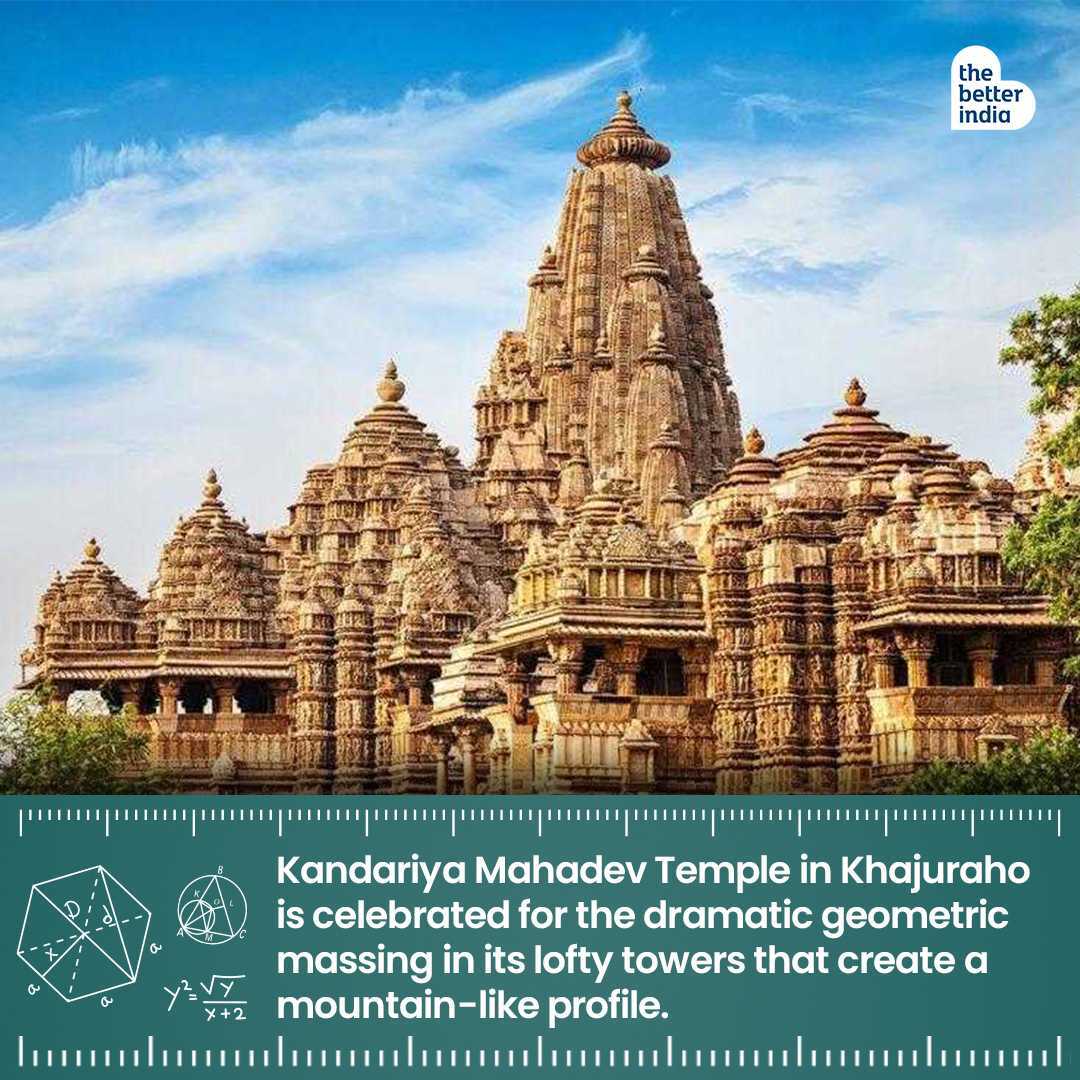
2. Charminar
Built in 1591 CE in Hyderabad by Muhammad Quli Qutb Shah, the fifth Sultan of the Qutub Shahi Dynasty, Charminar is considered a monument as well as a mosque. It is believed to have been built to commemorate the end of a widespread plague during that period.
Charminar is built on a square structure and has four grand arches and four minarets on each corner that are built into the main structure. It is interesting to note that the number ‘char’ or four and its multiples can be figured in at least 22 spots in the design of the structure.
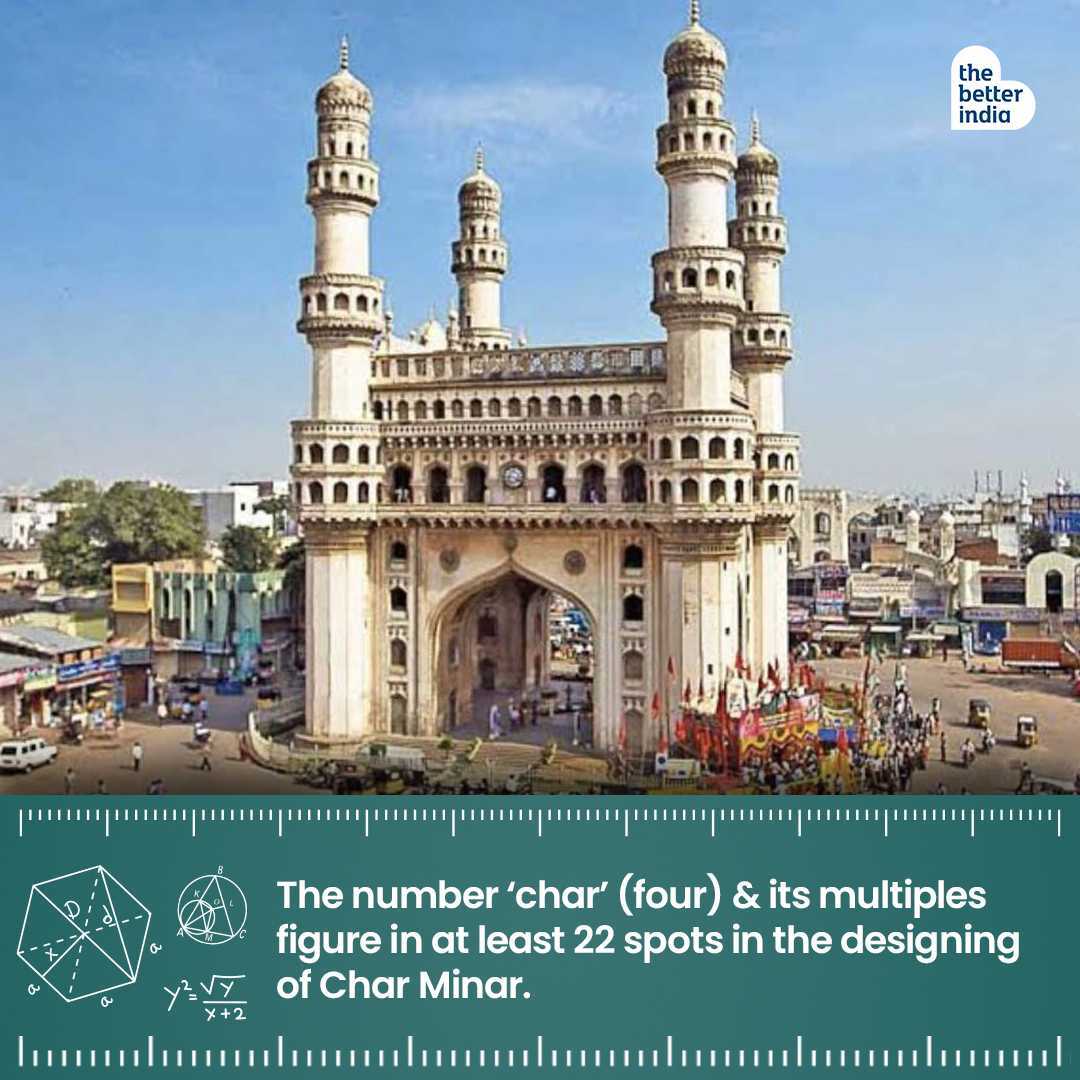
3. Ranakpur Jain Temple
The Ranakpur Jain Temple in Pali district of Rajasthan is known for its classic architecture and is believed to have been constructed by a Jain trader named Dharna Shah in the 15th century.
Considered one of the largest Jain temples in the country, it is dedicated to Adinatha, the first Tīrthaṅkara of Jainism. It is also known for the dense network of 1,444 carved pillars, despite which the design allows a clear sight of the idol of Adinatha.
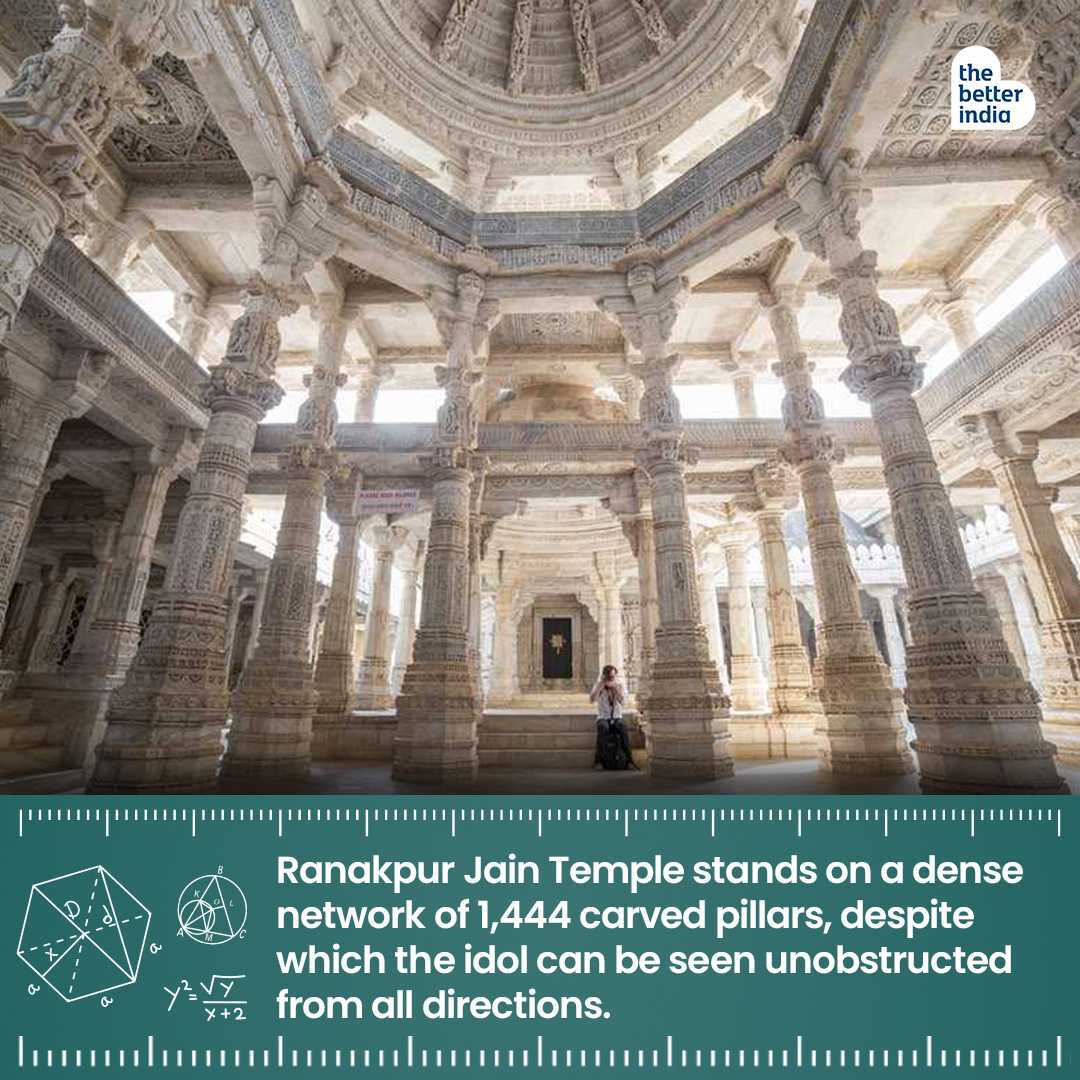
4. Modhera Sun Temple
Dedicated to Surya, the solar deity, the Modhera Sun Temple is situated in the Mehsana district of Gujarat. It was built in 1026 CE by King Bhimdev – a Solanki King on the banks of river Pushpavati. The temple has 52 heavily carved pillars signifying the weeks of the year, a mandap divided into seven sections signifying the days of the week and a panel of 365 elephants on the base of the temple signifying the number of days in a year.
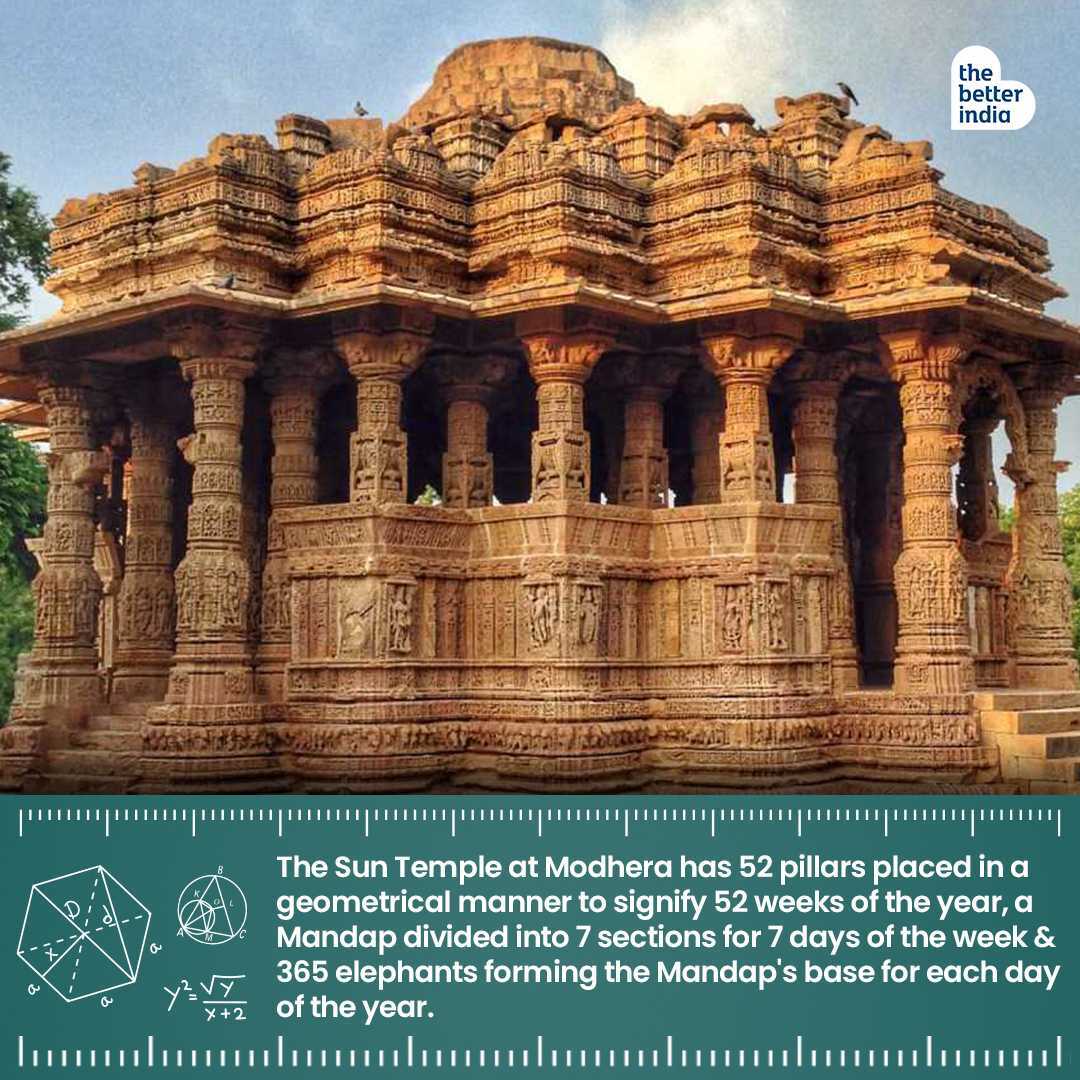
5. Samrat Yantra
The Samrat Yantra, the world’s biggest stone sundial standing at 73 feet high, is situated in Jantar Mantar in Jaipur, Rajasthan. It is one of the 19 astronomical instruments built by Rajput King Sawai Jai Singh II.
The Samrat Yantra is known for its precision in measuring time and tells the local time with an accuracy of 2 seconds using the shadow cast from the sunlight.
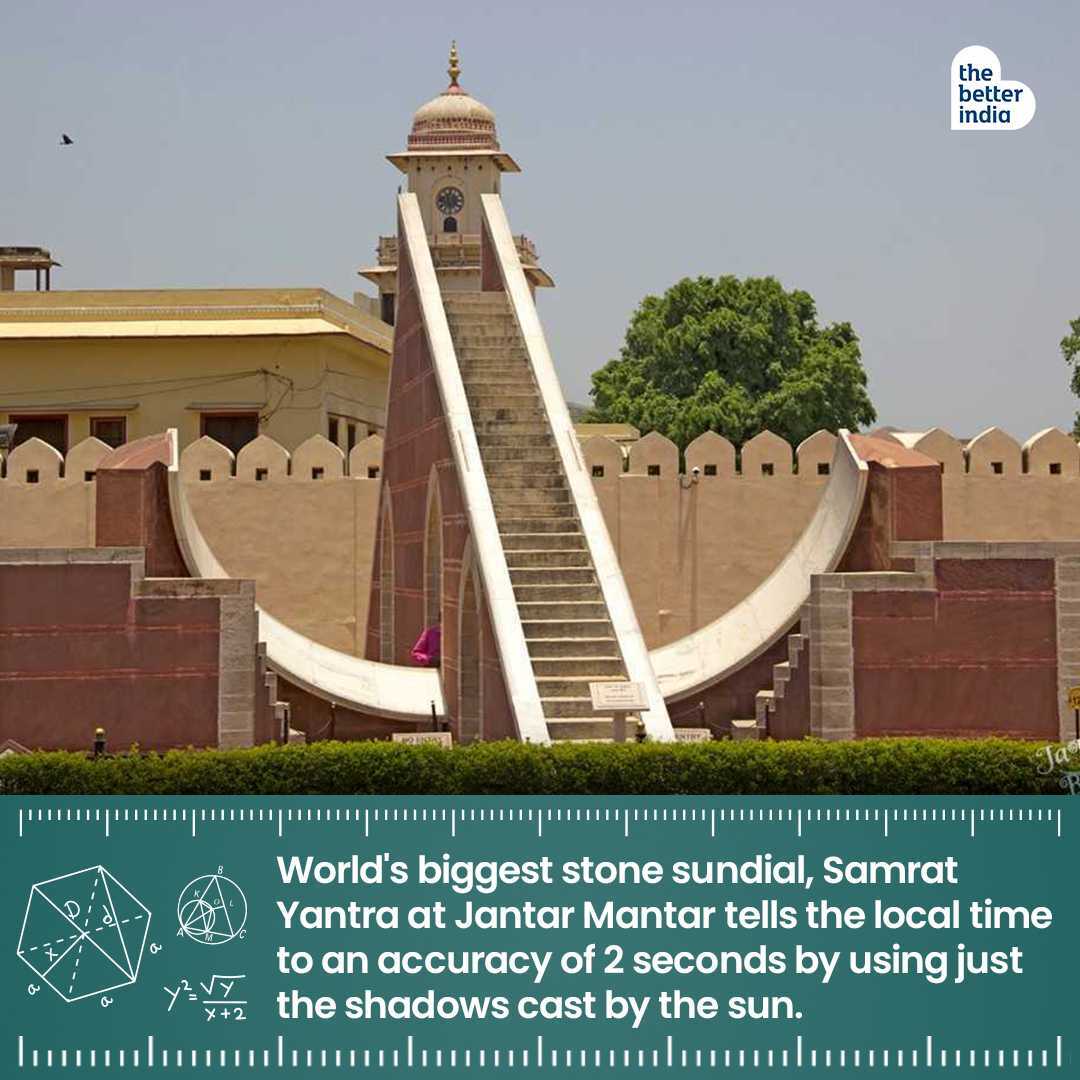
6. Virupaksha Temple
The Virupaksha temple is the largest and most sophisticated out of the monuments in Pattadakal, a complex of Hindu and Jain temples in Bagalkot district of Karnataka. Dedicated to Lord Shiva, the temple was built by Queen Lokamahadevi in the 8th century to commemorate the victory of her husband Vikramaditya II over the Pallavas. It is known for its triangular dome and square layout built to create fractal patterns that echo the geometry of nature.
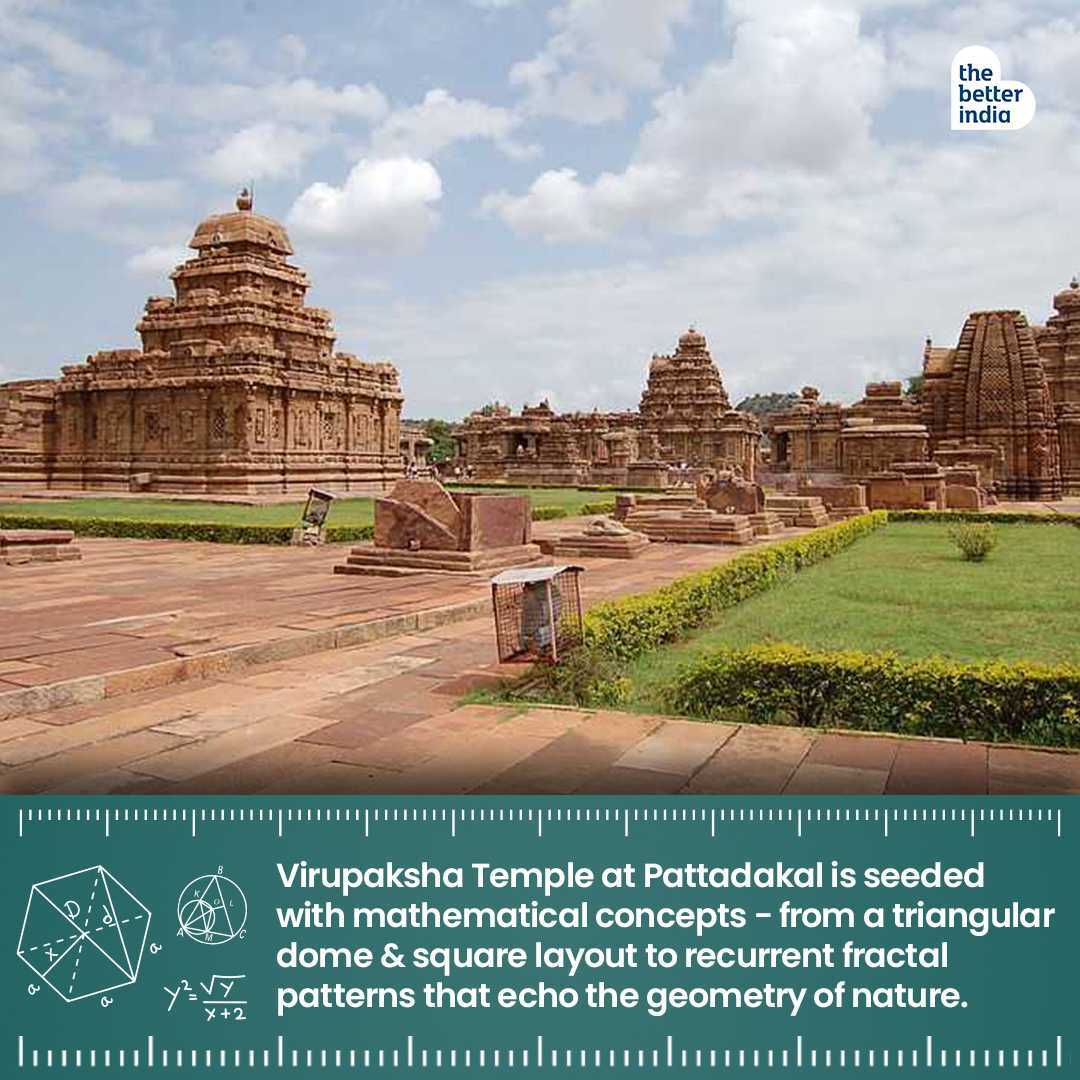
7. Sundial at Konark Sun Temple
The wheels of Konark Sun Temple in Puri, Odisha are sundials that help in calculating time to a minute including day and night. The sundial is unique as it shows time anti-clockwise. It has eight major spokes that divide 24 hours into eight equal parts which means the time between two major spokes is three hours.

8. Taj Mahal
One of the seven wonders of the world, the Taj Mahal is considered to be one of the finest masterpieces of architecture in India. It was commissioned by Mughal Emperor Shah Jahan in 1632 in the loving memory of his wife Mumtaz and was believed to have been completed in 1653.
The monument that houses the tombs of both Shah Jahan and Mumtaz is built inside out in white marble. Their tombs lie at the centre of the base and all the windows there are equidistant from one another. Another marvel of this structure is that the walkway tiles combine to form squares and hexagons to create octagons.
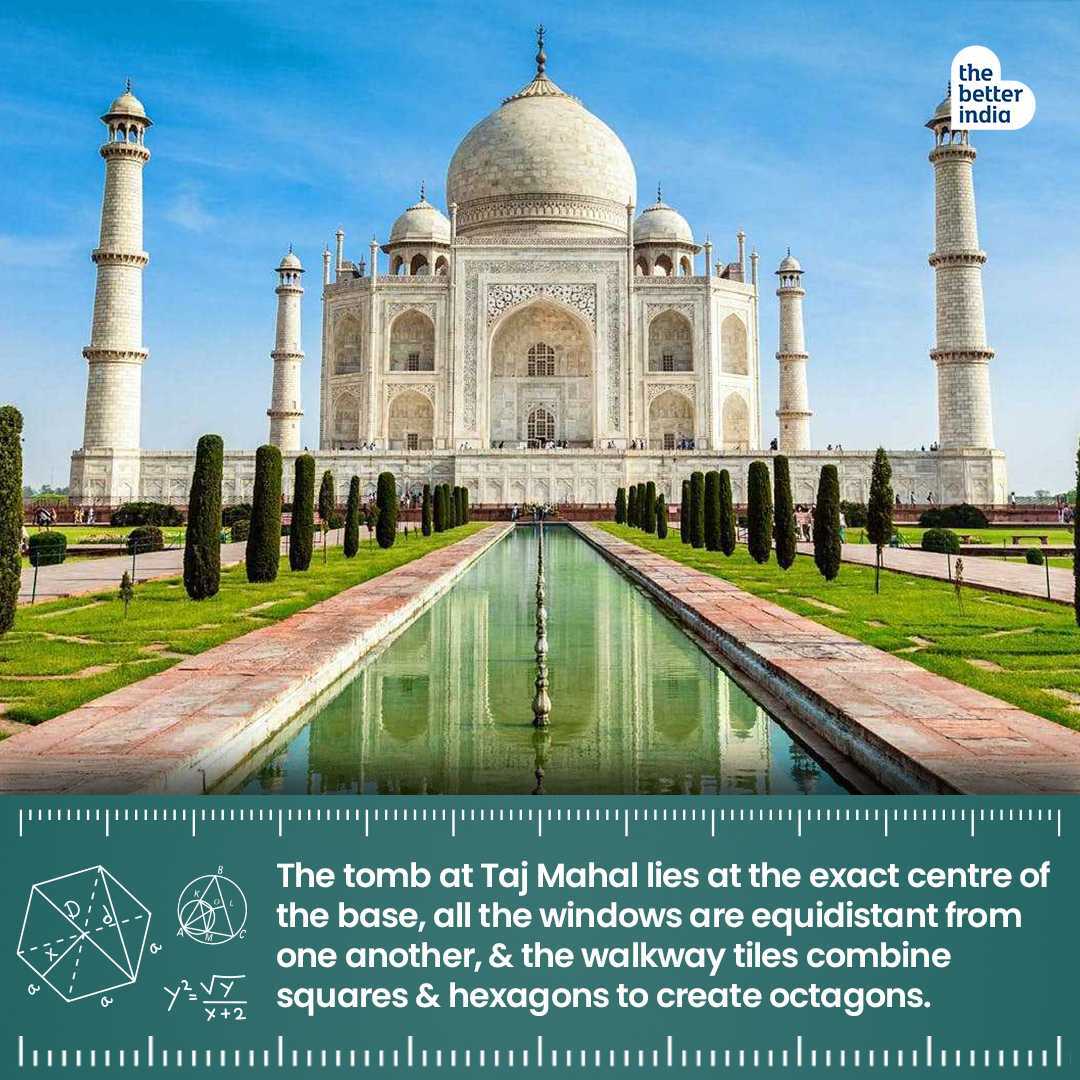
(Edited by Yoshita Rao)
No comments:
Post a Comment